Volume 25 · Number 1 · Fall 2007
Alumni Authors
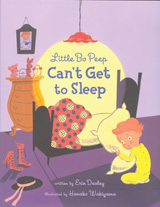
Erin Dealey
B.A. English major, art minor ’70; secondary teaching credential ’72
Favorite books growing up: Nancy Drew books, The Witch of Blackbird Pond, Dr. Seuss books and her sister’s comic books
Author of Goldie Locks Has Chicken Pox (Atheneum/Simon & Schuster, 2002; Aladdin Paperbacks, 2005), Little Bo Peep Can’t Get To Sleep (Atheneum/ Simon & Schuster, 2005) and A Happy Mistake: The Invention of the Telephone (Pearson, 2007)
“The hardest part about writing? Getting started. Once I began putting words on paper, instead of thinking about ‘writing a book some day’ I was hooked! And yes, it’s true that I carried my sloppy copy [for Goldie Locks] around with me everywhere and wrote most of it in the carpool pick-up line, waiting for my daughter to get out of school.
“Strange as it sounds, my UC Davis writing mentors were two of my art professors, Wayne Thiebaud and Bob Arneson. Their innovative work and strong sense of ‘voice’ taught me to think outside the box. It’s crazy to think that I entered Davis as a math major and ended up writing children’s books! I always tell kids at school visits: You never know where your path will lead. I credit UC Davis for giving me the foundation and motivation to find mine.”
Excerpt from Little Bo Peep Can’t Get To Sleep:
“Don’t tell Mom,” warned Little Boy Blue.
“You’ll be in trouble if you do.”
Peep said, “My flock will be home soon.”
Blue laughed. “When cows jump over the moon!”
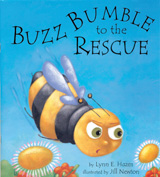
Lynn Hazen
B.S. in applied behavioral sciences ’77
Favorite books growing up: Harriet the Spy, Island of the Blue Dolphins
Author of Mermaid Mary Margaret (Bloomsbury, 2004), Buzz Bumble to the Rescue (Bloomsbury, 2005), Cinder Rabbit (Henry Holt, 2008), Shifty
(Tricycle Press, 2008) and Seymour’s Snail Trail (Henry Holt, 2009)
“I started out writing picture books because I’m a preschool teacher, and I’ve enjoyed reading tons of picture books in the classroom, as well as to my own children. But now I’ve written across most children’s genres. Ideas and inspiration come from all around me: children in my preschool, my own family, my city and, of course, my imagination.
“The writing part is pretty solitary, so talking to children, families, librarians and teachers is great. I love doing school visits and giving workshops to writers and educators. Meeting children — and adults — who’ve read my books is very fulfilling. When readers find humor, heart and hope in my stories, it makes all the challenges of being a children’s book author worthwhile.”
Excerpt from Shifty:
“What’s up, buddy?” I say. I use my soft voice so I don’t startle him.
That baby’s eyes start looking all around, but he can’t quite figure out where I’m at.
“Yo, I’m over here. You think Sissy’s gonna get me in trouble?”
That baby starts getting jittery and scrunches his little fists like he’s mad at the world.
“I don’t blame you, buddy. I read your file, too.”
He’s working up to a full blown crying fit. First his body’s shaking, and then he starts crying. It’s a pitiful cry, kind of screechy, but not loud. Like he doesn’t have enough air in his lungs or enough energy to be loud. Or like he knows nobody’s listening whether he’s crying or not.
I’m listening. I jiggle the car seat, and squeak his little duckie toy to try and calm him down.
“Hey now, don’t get yourself all agitated. Life’s not fair, but you got a chance. I’ll be honest with you, it’s not a very big chance. You got a little tiny scrawny chance just your size.”
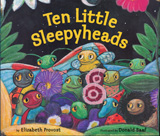
Elizabeth Provost
B.A. in French ’57
Favorite books growing up: The Bobbsey Twins books
Author of Ten Little Sleepyheads (Bloomsbury, 2006)
“I get ideas from watching kids and their families and remembering how those situations played out in my own life. I write down ideas on whatever, and then staple them onto binder sheets to work on when I can. Knowing that I have that binder keeps me from panicking.
“Ten Little Sleepyheads is a bedtime book, and I wanted to assure children that their world is a good place to be, even though it’s not perfect. After 9/11, I wanted a peaceful, rhyming book with a quiet ending to send them off to sleep.”
Excerpt from Ten Little Sleepyheads:
Eight little sleepyheads giggling in a pile. One falls asleep with a dreamy little smile.
Seven little sleepyheads playing peek-a-boo. One falls asleep, but we’re never telling who.
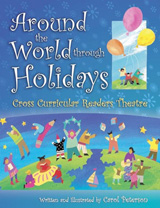
Carol Peterson
B.A. in international relations ’76
Favorite books growing up: Jane Eyre, Wuthering Heights, The Secret Garden
Author of Jump Back in Time: A Living History Resource (Teacher Ideas Press, 2004), Around the World Through Holidays: Cross Curricular Readers Theatre (Libraries Unlimited, 2006) and Jump Into Science: Themed Science Fairs (Teacher Ideas Press, 2007)
“When I had kids of my own, I fell in love all over again with kids’ lit. It brought me back to my own childhood and reminded me how important books were to me then. I wanted to be part of that. I’d like kids to take away from my books that learning can be fun!
“There’s one secret that successful writers know, and it’s the hardest part of writing. The secret is ‘BIC’ — put your bottom in the chair. You can’t write if you don’t write — so just put your bottom in the chair and keep it there until you’re done.”
Excerpt from Around the World Through Holidays:
The currency used in India is the rupee [pronounced roo-PEE]. Check an online currency converter or the financial section of a newspaper and compare one rupee with one US dollar. Calculate how much it would cost in rupees to buy:
• A candy bar (at US $.50)
• A pizza (at US $10.00)
• A car (at US $15,000.00)
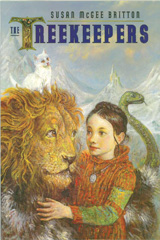
Susan McGee Britton
B.A. in English ’79, B.S. in landscape architecture ’92
Favorite books growing up: The Poky Little Puppy, The Golden Book of Poetry, Little Women, The Catcher in the Rye, Andrew Lang’s fairy tale collection named for colors (The Blue Fairy Book, The Green Fairy Book, etc.)
Author of The Treekeepers (Dutton Children’s Books, 2003)
“A good book should have a strong and unique main character children can identify with and a plot full of surprises that together give the reader strength and courage, hope and tenderness.
“Bird, the hero of The Treekeepers, is a strong-minded orphan girl with an anger problem. She goes on two journeys: one to save her people and another, of which she is scarcely aware, to find love. People come into her life who love her even though she’s wild and difficult, and in the end they give her the power to become a person who can love back.”
Excerpt from The Treekeepers:
Some wildling boys were wrestling in the ruins of the great hall. As [Bird] sped by, one shouted out, “Is that stupid baby dead yet?”
“Shut your mouth, wormlips,” she hollered back and rushed out the door, into the gathering night, into the ruined town of Graynok.
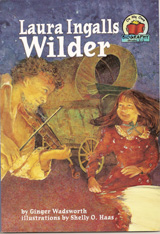
Ginger Wadsworth
B.A. in English literature ’67
Favorite books growing up: Charlotte’s Web, Oz books, Little Women, any book about horses.
Author of over 20 children’s books, including Rachel Carson: Voice for the Earth (Lerner Publications, 1992), Desert Discoveries (Charlesbridge Publishing, 1997), Laura Ingalls Wilder (First Avenue Editions, 2000), Words West: The Voices of Young Pioneers (Clarion Books, 2003) and Woolly Mammoths (Millbrook Press, 2006)
“I adore anything to do with natural history, and I wish I had a degree in zoology. Writing biographies is great fun. I love being a ‘detective,’ and ferreting out information about famous Americans. Some of my books are about naturalists, like John Muir, and whenever possible, I like to write about women, such as my book Julia Morgan, Architect of Dreams.
“As a result, in part, of the influence of my American history professor at UC Davis, W. Turrentine Jackson, I developed a fascination with Western American history. So my book Words West, Voices of Young Pioneers is dedicated to him. It’s about some of the real young people who traveled west during the covered wagon migration.
“My goal is that kids ‘fly’ with the knowledge that my books and others offer them, and that learning new things leads them right back to other books, to build on that knowledge.”
Excerpt from Laura Ingalls Wilder:
Seven-year-old Laura scrambled into the covered wagon. Her big sister, Mary, climbed in beside her. Her little sister, Carrie, sat on Ma’s lap. Pa shook the reins, and the horses pulled the wagon down the dusty road.
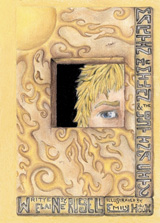
Elaine Russell
B.A. in history ’70
Favorite books growing up: Little Toot, Mother Goose, The Bobbsey Twins books, Pollyanna, Nancy Drew books, Black Beauty, Grimm’s Fairytales
Author of Martin McMillan and the Lost Inca City (Polar Bear & Company, 2004)
“I have a son who was 10 at the time I started writing Martin McMillan and the Lost Inca City. It was hard to find books that appealed to him, so I tried to write a book I thought he and his friends would enjoy.
“I wrote a book that is a fast-paced adventure novel, but also teaches kids about the history of the Incas’ demise, a little about the culture of Peru and issues involving archeology. I was a history major at UC Davis, and I love to travel.”
Excerpt from Martin McMillan and the Lost Inca City:
Fifteen minutes into the ride, the road ended and the stones expanded into a large square, much like the plaza in the village. In the center, Martin saw a gold face, or maybe it was a mask, surrounded by squiggly lines radiating out in all directions.
Isabel’s puzzled eyes met Martin’s. “What’s this?”
Pedro explained quickly that an old temple lay beyond the square but they could go no farther. He held his skateboard, twirling the front wheel, as his eyes darted around the plaza. Suddenly, he told Isabel they needed to go back to the village right away.
— Erin Loury
